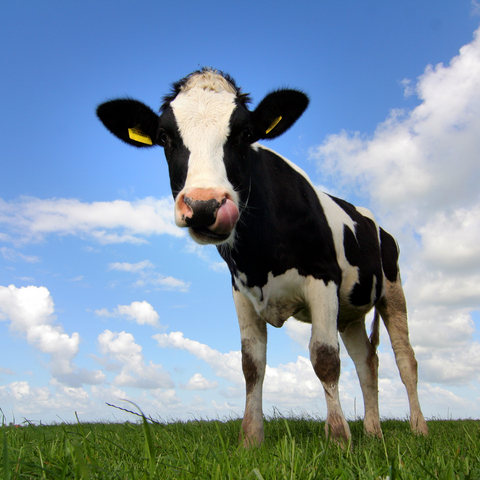Cattle disease bacteria widespread in the UK

A new study has found that bacteria responsible for chronic intestinal inflammation in cattle, which have also been implicated in Crohn's disease in humans, are widespread in the UK countryside.
Mycobacterium avium subspecies paratuberculosis (MAP) is a bacterium that causes chronic inflammation of the intestine in a wide range of animals, including primates. In cattle it causes Johne's disease; there is no cure, so affected cows have to be culled, although some herds are vaccinated.
This is a major problem for farmers as, according to Defra, the disease is present in roughly a third of cattle herds in the UK, and rising.
The first ever national study of the distribution of MAP shows it is more prevalent in the UK than previously thought, and not just on farmland. More than one in ten of over a thousand soil samples tested were found to contain the bacterium, and in rivers it was even more common.
Professor Roger Pickup from the Faculty of Health and Medicine at Lancaster University is one of the authors of the study.
He said: “Where you have higher cattle numbers, you get more contamination, but one of the significant things that has come out of this research is that they aren't confined to agricultural areas.”
The reason the bacteria are so prevalent is that they spread rapidly through the large quantities of diarrhoea that infected cows produce. Once on the ground, they end up being consumed by other cows or wild animals.
Professor Pickup said: “This bacterium is very robust. What happens is these animals are infected and they get severe diarrhoea and they'll shed millions and millions of these bacteria onto the ground, and then other animals will come along and eat them.'
MAP from cow faeces is also washed into rivers, where it may be transported over large distances. It is resilient enough to survive in water for several months, or even years, which helps it spread.
There is some evidence to suggest that MAP may be linked to Crohn's disease in humans, a long-term condition causing inflammation of the intestine, for which there is currently no cure. If a link between MAP and Crohn's disease was proven, this would have serious implications, for example for the food industry.
The bacteria are hardy enough to survive pasteurisation, and have been found in over 10 per cent of samples of semi-skimmed milk tested. But claims that it is associated with Crohn's disease remain controversial and unresolved.
Regardless of whether MAP has any implications for human health, its prevalence is a problem for UK farmers because of the large numbers of infected cattle.
However, it is not yet clear what level of exposure to the bacteria causes disease. The results of this study, published in Environmental Microbiology, suggest that future research into MAP should look for its presence in water rather than soil, as this provides a more sensitive measure of where it occurs.